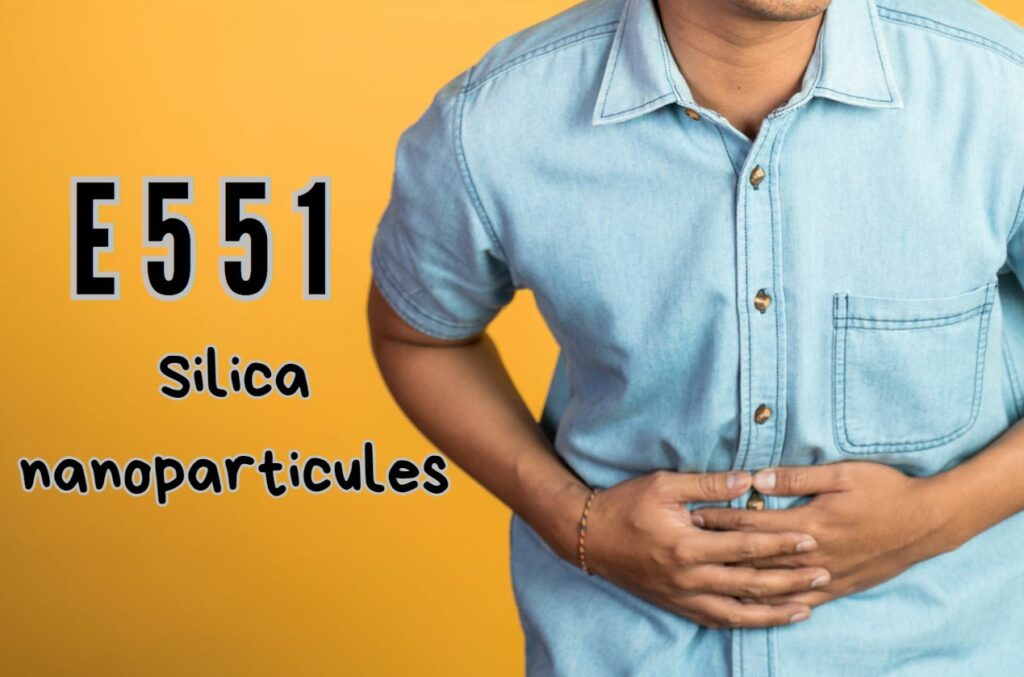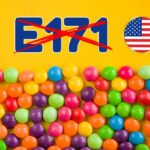
Silica nanoparticles may promote gluten intolerance
French and Canadian researchers warn of the role played by silica nanoparticles in the development of gluten intolerance.
These nanoparticles are found not only in the additive E551, but also in many processed foods… with no mention of their presence on the packaging.
In this case, it is impossible to identify them. The only solution is to test the products. That’s what AVICENN did in 2022!
Mice exposed to E551 develop intestinal inflammation
In a scientific article published by the journal Environmental Health Perspectives1Cf. Evaluating the Effects of Chronic Oral Exposure to the Food Additive Silicon Dioxide on Oral Tolerance Induction and Food Sensitivities in Mice, Lamas B. et al, Environmental Health Perspectives, 132, 2, 2024, DOI: 10.1289/EHP12758, researchers at INRAé and McMaster University in Canada warn that silica nanoparticles may promote gluten intolerance*– an autoimmune disease (known as celiac disease) whose causes have so far remained unidentified.
* Gluten is a protein found in wheat and many other cereals, which in some people (with a particular genetic disposition) causes digestive problems that can lead to stomach pains or even diarrhea, causing weight loss or anemia.
After three months of daily exposure to moderate doses of silica nanoparticle (from food additive E551) included in their diet, the mice developed intestinal inflammation – a sign of food intolerance. A decrease in the number of intestinal immune cells was observed, with a consequent reduction in the production of anti-inflammatory molecules, which play a vital role in protecting the small intestine. A worsening of the inflammatory signs characteristic of this chronic disease was then observed.
What is E551 and where can I find it?
E551 is a food additive composed of silica nanoparticles that has long been used :
- as an anti-caking agent to make powdered foodstuffs (salts, sugar, spices, cocoa powder, soluble coffee, freeze-dried soups, instant noodles, etc.) more fluid
- or as a texturizing agent to modify the texture of certain processed foods.
While more than 2,700 products containing E551 are listed in the OpenFoodFacts database (which is not necessarily up to date) , E551 has gradually disappeared from many labels.
Silica nanoparticles in many products, incognito!
Silica nanoparticles are not only present in E551. They can also be found in many ready-made meals without E551 being mentioned on the label! This makes itimpossible to identify them… except by means of very costly tests. AVICENN tried this out in 2022: among the 23 everyday products we tested, 5 food products were selected; they did NOT mention silica in their composition. And yet… the results of analyses carried out by the Laboratoire national de métrologie et d’essais (LNE) showed that all contained silica nanoparticles!

A single bowl of Knorr soup tested contained almost 40 mg of silica. This represents billions of silica nanoparticles, not listed on the label – although legally!
How can these silica nanoparticles be legally present in these food products, when neither the word “silica” nor its code name “E551” appear in the product composition? Legislation provides for labelling exemptions. This is the case of silica nanoparticles in particular, which can be present as :
- transfer” additive: their presence in a foodstuff can be explained by their use in one or more ingredients or additives used in the manufacture of this foodstuff (for example, silica nanoparticles can be used in potassium nitrate (E252) used at the time in Aoste hams)
- or “processing aids” : their presence is not subject to labelling requirements when they represent less than 1% of the product’s weight (this is the case for silica nanoparticles used to promote the flow of powders during factory packaging, for example).
→ The results of the study published this month should finally lead public authorities and food brands to stop burying their head in the sand as we were denouncing back in 20222See our report Searching for [nanos] in every day products, AVICENN, December 2022. To be continued!


Les prochains RDV nano

- Scientific conference
- 23rd International conference on Advanced Nanomaterials
- From July 23 to July 25, 2025
- Website: www.advanced-nanomaterials-conference.com

- E-learning program: awareness-raising for personnel who come into contact with nanomaterials during research, formulation, production, maintenance, cleaning, upkeep, etc., as well as safety coordinators or engineers, facility managers, heads of laboratories where nanoparticles are handled.
- Organizers: INSTN Grenoble (CEA)
- On the program:
- 1 – Introduction, definition and characteristics of nanomaterials
- 2 – Toxicity of nanomaterials: the state of knowledge
- 3 – Metrology and characterization of nanomaterials
- 4 – Prevention and protection against nanomaterials in the workplace
- 5 – Quiz: assessment of learning outcomes
- The 2-hour course can be viewed for one month from the date of registration.
- Website: https://instn.cea.fr/…risques-lies-aux-nanomateriaux…

- E-learning program: awareness-raising for personnel who come into contact with nanomaterials during research, formulation, production, maintenance, cleaning, upkeep, etc., as well as safety coordinators or engineers, facility managers, heads of laboratories where nanoparticles are handled.
- Organizers: INSTN Grenoble (CEA)
- On the program:
- 1 – Introduction, definition and characteristics of nanomaterials
- 2 – Toxicity of nanomaterials: the state of knowledge
- 3 – Metrology and characterization of nanomaterials
- 4 – Prevention and protection against nanomaterials in the workplace
- 5 – Quiz: assessment of learning outcomes
- The 2-hour course can be viewed for one month from the date of registration.
- Website: https://instn.cea.fr/…risques-lies-aux-nanomateriaux…
Notes and references
- 1Cf. Evaluating the Effects of Chronic Oral Exposure to the Food Additive Silicon Dioxide on Oral Tolerance Induction and Food Sensitivities in Mice, Lamas B. et al, Environmental Health Perspectives, 132, 2, 2024, DOI: 10.1289/EHP12758
- 2See our report Searching for [nanos] in every day products, AVICENN, December 2022








